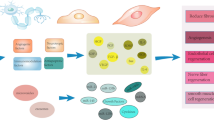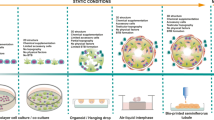Abstract
Purpose
To determine the unique contributions from elevated voiding and storage pressures in the development of fibrosis and the epithelial-to-mesenchymal transition (EMT) in urothelial cells, and how progressive BOO pressure cycling is an important mechanical cue leading to these pathological changes.
Materials and methods
Urothelial cells isolated from control, SHAM, 2 (acute)- or 6 (chronic)-week BOO rats treated with an inflammasome inhibitor or no drug. Total RNA was isolated and RT-PCR was conducted with custom primers for pro-fibrotic and EMT genes. In separate experiments, a rat urothelial cell line was exposed to cyclic pressure regimes characteristic of acute and chronic BOO in the presence or absence of an inflammasome inhibitor. Following exposure, RT-PCR was conducted, collagen content was determined and intracellular caspase-1 activity was measured.
Results
Urothelial cells isolated from acute and chronic BOO rat models demonstrated expression of pro-fibrotic and EMT genes. Similarly, MYP3 rat urothelial cells subjected to pressure cycling regimes that reflect intravesical pressures in the acute or chronic BOO bladder also demonstrated increased expression of pro-fibrotic and EMT genes, along with elevated soluble collagen. Treatment with inflammasome inhibitors reduced expression of pro-fibrotic genes in the rat model and pressure cycling model but had a limited effect on EMT.
Conclusion
These results indicate that acute and chronic BOO pressure cycling are essential in the initiation and progression of fibrosis in the bladder via the NLRP3 inflammasome, but also provide new evidence that there is also an alternative NLRP3-independent pathway leading to EMT and fibrosis.






Similar content being viewed by others
References
Irwin DE, Milsom I, Kopp Z, Abrams P, Artibani W, Herschorn S (2009) Prevalence, severity, and symptom bother of lower urinary tract symptoms among men in the EPIC study: impact of overactive bladder. Eur Urol 56:14–20
Irwin DE, Milsom I, Hunskaar S, Reilly K, Kopp Z, Herschorn S, Coyne K, Kelleher C, Hampel C, Artibani W (2006) Population-based survey of urinary incontinence, overactive bladder, and other lower urinary tract symptoms in five countries: results of the EPIC study. Eur Urol 50:1306–1315
Hughes FM, Sexton SJ, Jin H, Govada V, Purves JT (2017) Bladder fibrosis during outlet obstruction is triggered through the NLRP3 inflammasome and the production of IL-1β. Am J Physiol Physiol 313:F603–F610
Lepor H (2007) Alpha blockers for the treatment of benign prostatic hyperplasia. Rev Urol 9:181
Andersson K-E, Gratzke C (2007) Pharmacology of α1-adrenoceptor antagonists in the lower urinary tract and central nervous system. Nat Clin Pract Urol 4:368
Chai TC, Gemalmaz H, Andersson K-E, Tuttle JB, Steers WD (1999) Persistently increased voiding frequency despite relief of bladder outlet obstruction. J Urol 161:1689–1693
Jin L-H, Andersson K-E, Han J-U, Kwon Y-H, Park C-S, Shin H-Y, Yoon S-M, Lee T (2011) Persistent detrusor overactivity in rats after relief of partial urethral obstruction. Am J Physiol Integr Comp Physiol 301:R896–R904
Blatt AH, Brammah S, Tse V, Chan L (2012) Transurethral prostate resection in patients with hypocontractile detrusor—what is the predictive value of ultrastructural detrusor changes? J Urol 188:2294–2299
Bosch R, Abrams P, Averbeck MA, Finazzi Agró E, Gammie A, Marcelissen T, Solomon E (2019) Do functional changes occur in the bladder due to bladder outlet obstruction? Neurourol Urodyn 38(Suppl 5):S56–S65
Holmdahl G, Sillen U, Bachelard M, Hansson E, Hermansson G, Hjalmas K, Bauer SB (1995) The changing urodynamic pattern in valve bladders during infancy. J Urol 153:463–467
Petrilli V, Papin S, Dostert C, Mayor A, Martinon F, Tschopp J (2007) Activation of the NALP3 inflammasome is triggered by low intracellular potassium concentration. Cell Death Differ 14:1583–1589
Lamkanfi M, Mueller JL, Vitari AC, Misaghi S, Fedorova A, Deshayes K, Lee WP, Hoffman HM, Dixit VM (2009) Glyburide inhibits the Cryopyrin/Nalp3 inflammasome. J Cell Biol 187:61–70
Hughes FM, Hill HM, Wood CM, Edmondson AT, Dumas A, Foo W-C, Oelsen JM, Rac G, Purves JT (2016) The NLRP3 inflammasome mediates inflammation produced by bladder outlet obstruction. J Urol 195:1598–1605
Dunton CL, Purves JT, Hughes FM, Jin H, Nagatomi J (2018) Elevated hydrostatic pressure stimulates ATP release which mediates activation of the NLRP3 inflammasome via P2X4 in rat urothelial cells. Int Urol Nephrol 50:1607–1617
Tekgul S, Yoshino K, Bagli D, Carr MC, Mitchell ME, Yao LY (1996) Collagen types I and III localization by in situ hybridization and immunohistochemistry in the partially obstructed young rabbit bladder. J Urol 156:582–586
Schröder A, Kirwan TP, Jiang J-X, Aitken KJ, Bägli DJ (2013) Rapamycin attenuates bladder hypertrophy during long-term outlet obstruction in vivo: tissue, matrix and mechanistic insights. J Urol 189:2377–2384
Iguchi N, Hou A, Koul HK, Wilcox DT (2014) Partial bladder outlet obstruction in mice may cause E-cadherin repression through hypoxia induced pathway. J Urol 192:964–972
Islam SS, Mokhtari RB, El Hout Y, Azadi MA, Alauddin M, Yeger H, Farhat WA (2014) TGF-β1 induces EMT reprogramming of porcine bladder urothelial cells into collagen producing fibroblasts-like cells in a Smad2/Smad3-dependent manner. J Cell Commun Signal 8:39–58
Sharif-Afshar A-R, Donohoe JM, Pope JC, Adams MC, Brock JW, Bhowmick NA (2005) Stromal hyperplasia in male bladders upon loss of transforming growth factor-β signaling in fibroblasts. J Urol 174:1704–1707
Baskin LS, Hayward SW, Young P, Cunha GR (1996) Role of mesenchymal-epithelial interactions in normal bladder development. J Urol 156:1820–1827
Geng H, Zhao L, Liang Z, Zhang Z, Xie D, Bi L, Wang Y, Zhang T, Cheng L, Yu D (2015) ERK5 positively regulates cigarette smoke-induced urocystic epithelial-mesenchymal transition in SV-40 immortalized human urothelial cells. Oncol Rep 34:1581–1588
Orlichenko LS, Radisky DC (2008) Matrix metalloproteinases stimulate epithelial-mesenchymal transition during tumor development. Clin Exp Metastasis 25:593–600
Hughes FM Jr, Sexton SJ, Ledig PD, Yun CE, Jin H, Purves JT (2019) Bladder decompensation and reduction in nerve density in a rat model of chronic bladder outlet obstruction are attenuated with the NLRP3 inhibitor glyburide. Am J Physiol Physiol 316:F113–F120
Hughes FM Jr, Vivar NP, Kennis JG, Pratt-Thomas JD, Lowe DW, Shaner BE, Nietert PJ, Spruill LS, Purves JT (2014) Inflammasomes are important mediators of cyclophosphamide-induced bladder inflammation. Am J Physiol Physiol 306:F299–F308
Cohen SM, Arnold LL, Uzvolgyi E, Cano M, St-John M, Yamamoto S, Lu X, Le XC (2002) Possible role of dimethylarsinous acid in dimethylarsinic acid-induced urothelial toxicity and regeneration in the rat. Chem Res Toxicol 15:1150–1157
Nascimento MG, Suzuki S, Wei M, Tiwari A, Arnold LL, Lu X, Le XC, Cohen SM (2008) Cytotoxicity of combinations of arsenicals on rat urinary bladder urothelial cells in vitro. Toxicology 249:69–74
Kawamata H, Kameyama S, Nan L, Kawai K, Oyasu R (1993) Effect of epidermal growth factor and transforming growth factor β1 on growth and invasive potentials of newly established rat bladder carcinoma cell lines. Int J Cancer 55:968–973
Hughes FM, Turner DP, Todd Purves J (2015) The potential repertoire of the innate immune system in the bladder: expression of pattern recognition receptors in the rat bladder and a rat urothelial cell line (MYP3 cells). Int Urol Nephrol 47:1953–1964
Stover J, Nagatomi J (2007) Cyclic pressure stimulates DNA synthesis through the PI3K/AKT signaling pathway in rat bladder smooth muscle cells. Ann Biomed Eng 35:1585–1594
Hughes FM, Vivar NP, Kennis JG, Pratt-Thomas JD, Lowe DW, Shaner BE, Nietert PJ, Spruill LS, Purves JT (2013) Inflammasomes are important mediators of cyclophosphamide-induced bladder inflammation. Am J Physiol Physiol 306:F299–F308
Choo MS, Moon J-H, Lee HK, Lee MJ, Lee SH, Han JH, Choi SH (2017) MP94-14 urodynamic evaluation of da-8010 in conscious rats with partial bladder outlet obstruction. J Urol 197:e1251–e1251
Liu Q, Luo D, Yang T, Liao B, Li H, Wang K-J (2017) Protective effects of antimuscarinics on the bladder remodeling after bladder outlet obstruction. Cell Physiol Biochem 44:907–919
Malkowicz SB, Wein AJ, Elbadawi A, Arsdalen KV, Ruggieri MR, Levin RM (1986) Acute biochemical and functional alterations in the partially obstructed rabbit urinary bladder. J Urol 136:1324–1329
Metcalfe PD, Wang J, Jiao H, Huang Y, Hori K, Moore RB, Tredget EE (2010) Bladder outlet obstruction: progression from inflammation to fibrosis. BJU Int 106:1686–1694
Lee SD, Akbal C, Miseeri R, Jung C, Rink R, Kaefer M (2006) Collagen prolyl 4-hydroxylase is up-regulated in an acute bladder outlet obstruction. J Pediatr Urol 2:225–232
Rubinstein M, Sampaio FJ, Costa WS (2007) Stereological study of collagen and elastic system in the detrusor muscle of bladders from controls and patients with infravesical obstruction. Int Braz J Urol 33:33–41
Mirone V, Imbimbo C, Sessa G, Palmieri A, Longo N, Granata AM, Fusco F (2004) Correlation between detrusor collagen content and urinary symptoms in patients with prostatic obstruction. J Urol 172:1386–1389
Barbosa JABA, Reis ST, Nunes M, Ferreira YA, Leite KR, Nahas WC, Srougi M, Antunes AA (2017) The obstructed bladder: expression of collagen, matrix metalloproteinases, muscarinic receptors, and angiogenic and neurotrophic factors in patients with benign prostatic hyperplasia. Urology 106:167–172
Kim JC, Yoon JY, Seo SI, Hwang TK, Park YH (2000) Effects of partial bladder outlet obstruction and its relief on types I and III collagen and detrusor contractility in the rat. Neurourol Urodyn Off J Int Cont Soc 19:29–42
Kadam R, Wiafe B, Metcalfe PD (2020) Mesenchymal stem cells ameliorate partial bladder outlet obstruction-induced epithelial-mesenchymal transition type II independent of mast cell recruitment and degranulation. Can Urol Assoc J 15:E29
Strowig T, Henao-Mejia J, Elinav E, Flavell R (2012) Inflammasomes in health and disease. Nature 481:278–286
Xu J, Lamouille S, Derynck R (2009) TGF-β-induced epithelial to mesenchymal transition. Cell Res 19:156–172
Tian R, Zhu Y, Yao J, Meng X, Wang J, Xie H, Wang R (2017) NLRP3 participates in the regulation of EMT in bleomycin-induced pulmonary fibrosis. Exp Cell Res 357:328–334
Wang W, Wang X, Chun J, Vilaysane A, Clark S, French G, Bracey NA, Trpkov K, Bonni S, Duff HJ, Beck PL, Muruve DA (2013) Inflammasome-independent nlrp3 augments tgf-β signaling in kidney epithelium. J Immunol 190:1239–1249
Wang N, Duan L, Ding J, Cao Q, Qian S, Shen H, Qi J (2019) MicroRNA-101 protects bladder of BOO from hypoxia-induced fibrosis by attenuating TGF-β-smad2/3 signaling. IUBMB Life 71:235–243
Wiafe B, Adesida A, Churchill T, Adewuyi EE, Li Z, Metcalfe P (2017) Hypoxia-increased expression of genes involved in inflammation, dedifferentiation, pro-fibrosis, and extracellular matrix remodeling of human bladder smooth muscle cells. Vitr Cell Dev Biol Anim 53:58–66
Funding
Grants: NIH (R01DK103534, P20GM103444, P20GM121342), NSF (1264579).
Author information
Authors and Affiliations
Contributions
CLD, JTP, FMH and JN conceived the project; CLD, JTP, FMH and JN designed the experiments; CLD and FMH performed the experiments; CLD analyzed the data; CLD, JTP, FMH and JN interpreted the results of experiments; CLD prepared the figures; CLD drafted the manuscript; CLD, JTP, FMH and JN edited and revised the manuscript CLD, JTP, FMH and JN approved the final version of the manuscript.
Corresponding author
Ethics declarations
Conflict of interest
The authors have no conflicts of interest to declare that are relevant to the content of this article.
Additional information
Publisher's Note
Springer Nature remains neutral with regard to jurisdictional claims in published maps and institutional affiliations.
Rights and permissions
About this article
Cite this article
Dunton, C.L., Purves, J.T., Hughes, F.M. et al. BOO induces fibrosis and EMT in urothelial cells which can be recapitulated in vitro through elevated storage and voiding pressure cycles. Int Urol Nephrol 53, 2007–2018 (2021). https://doi.org/10.1007/s11255-021-02942-3
Received:
Accepted:
Published:
Issue Date:
DOI: https://doi.org/10.1007/s11255-021-02942-3




